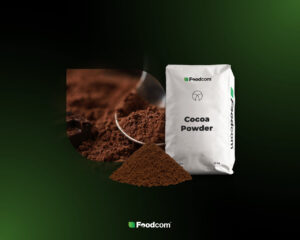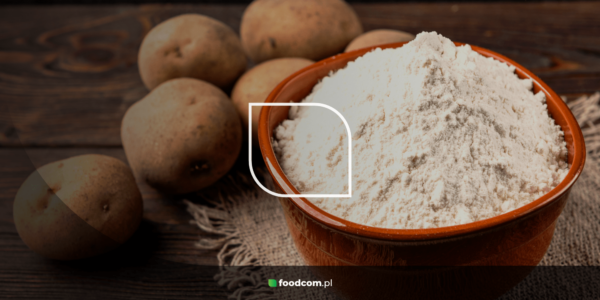- Food concentrates is a broad definition covering products belonging to various food industries.
- The purpose of producing food concentrates is to preserve food, reduce its volume while increasing its nutritional concentration and facilitate the use of the product in food preparation.
- Food concentrates include dinner concentrates (including instant and freeze-dried meals), dessert concentrates, condiments, coffees, nutritional and dietary foods, hydrolysates and protein preparations, as well as fruit and vegetable concentrates and dries, concentrated or powdered milk products and other items.
We use food concentrates every day in our homes, and we also encounter them in canteens, restaurants and shops. Full of nutritional value and flavour, they are often added to dishes, enhancing their taste and healthiness. They can also be used to make quick dishes. Let’s find out exactly what food concentrates are, how they are produced and which types we distinguish.
What are food concentrates?
Food concentrates are products with a high dry matter content. They are therefore nothing more than concentrated vegetable and animal raw materials. Dehydrating foodstuffs by drying them has been a well-known way of preserving food for years. Dried meat, vegetables, fruit, mushrooms or seeds have a significantly longer shelf life and are easier to store than fresh products due to their smaller volume.
In addition, food concentrates are easy to prepare and rich in nutrients such as vitamins, mineral salts and bioactive agents. For example, a fresh tomato contains 237 mg of potassium and 15 mg of vitamin C per 100 g of vegetable, while tomato concentrate has as much as 1070 mg of potassium and 40 mg of vitamin C per 100 g of product. The use of concentrates when cooking meals allows them to be prepared more quickly without any loss of nutritional value or organoleptic characteristics – no deterioration of taste and aroma in relation to fresh raw materials.
Division of food concentrates
Food concentrates belong to the group of products that constitute so-called convenience and functional foods. It is food prepared so that it can be consumed immediately after unpacking or after a short processing. They include frozen products, products for quick heating (ready-made meals, soups), snacks, salads, desserts, biscuits, drinks, breakfast cereals, nutritional supplements and meals for children, as well as instant coffee and tea. Convenience foods also include food concentrates and freeze-dried foods in the form of herbs, sauces or ready meals originally designed for astronauts or soldiers, now increasingly popular with, for example, sailors, Himalayan explorers and travellers.
There are different types of food concentrates, depending on what raw materials are used to make them. These can include products such as:
- plant and animal raw materials from domestic cultivation and breeding, e.g. fruit and vegetables, mushrooms, fish,
- semi-finished products or products of other food industries, such as: milk, butter, soups, starch, flour,
- imported raw materials, e.g. coffee,
- unconventional raw materials, e.g. herbs or beer yeast.
The food concentrates industry produces the following groups of concentrates:
- dinner concentrates – e.g. powdered soups, cubed broth, powdered potato purée or pancakes, pasta dishes with dried vegetables and meat, powdered sauces;
- dessert concentrates – jellies, puddings, kisses, ice cream powders, creams, cake concentrates as well as cake additives (raising agents, food aroma concentrates, flavourings, vanillin);
- seasonings – may be in the form of liquids (e.g. ‘Maggi’), pastes or as loose seasonings (Degusta, Kucharek, Vegeta, Warzywko – such seasonings usually contain: salt, monosodium glutamate, dried vegetables and herbs, hydrolysed protein or yeast extract and possibly colours);
- cereal coffee and coffee extracts – natural coffee can be freeze-dried, dried or granulated, while cereal coffee is made by roasting and grinding chicory, sugar beet and cereal beans;
- nutritional and dietary food products – e.g. baby food (modified milk), cereal gruel and porridge for older children or dietary products for people with special dietary needs (sick people, athletes, diabetics), creatine for athletes and food vitamin concentrates;
- hydrolysates and protein preparations – these are divided into: high-protein preparations (with a protein content of around 50%), concentrates (above 65% protein) and isolates (above 90% protein).
The above groups of food concentrates are produced by the concentrates industry. However, other food industries may also produce them. Which food concentrates are produced by the food industry: dairy, bakery or fruit and vegetable? These can be:
- fruit and vegetable concentrates, e.g. tomato concentrate,
- dried fruit and vegetables,
- pasta,
- cocoa powder,
- concentrated milk,
- milk powder,
- buttermilk powder,
- glucose-fructose syrup.
Production of food concentrates
Dehydration or thickening procedures are used in the production of food concentrates. These involve the removal of water from the product. Modern technologies such as freeze-drying are also used for this purpose. This process involves freezing the water present in foodstuffs and then evaporating it by sublimation. This achieves several objectives, such as:
- reducing the volume of the product,
- depriving products of bacteria and fungi that die at low temperatures,
- preserving the taste and nutritional value of foodstuffs.
Food concentrates come in semi-liquid or liquid form, as powders, cubes or pastes. In their production, factors such as:
- high quality raw materials,
- proper preparation of the raw materials for processing (e.g. cleaning, washing, cooling, grinding the raw materials),
- ensuring adequate quantities of raw material, fixed temperature or humidity,
- selection of packaging appropriate to the product properties,
- ensuring proper product storage and transport conditions.
In the production of concentrates, equipment such as peelers, washers, dryers, mills, sieves, filters and presses, mixers, extractors, autoclaves, evaporators, fermenters or dispensers are used.
Concentrates for the preparation of ready meals or additives are usually produced by mixing the ingredients in the right proportions, grinding the mixture and conditioning the concentrate. The situation is different for hydrolysates, such as proteins. More steps are required to produce them, including acid hydrolysis, neutralisation, filtration, decolourisation and concentration or drying. For example, casein or lactalbumin, whey, soya, pea, rice, sunflower, yeast, wheat gluten or gelatine are used to produce hydrolysates.
Liquid condiments and bouillon cubes are also produced from casein or gluten by hydrolysis. Protein concentrates are used in the production of: yoghurts, cheeses, baked goods, as well as products with a high protein content (drinks, energy bars, sports foods), protein supplements and dietary supplements.
Well-known manufacturers of food concentrates in Poland include Amino and Winiary. Foreign companies include e.g. BestFoods, Nestle, Dr. Oetker, Nutricia or Rieber & Son. A noteworthy company offering various types of food concentrates, including whey protein concentrates, is undoubtedly Foodcom S.A.. The food concentrates industry continues to go from strength to strength, offering more and more new products, especially in the segment of convenience foods and protein hydrolysates, which are becoming more and more popular in the era of caring for health and physical activity.








![Soybean market overview [Global Report] Soybean market overview [Global Report]](https://foodcom.pl/wp-content/uploads/2025/10/global-report-butte-blogr-600x300.png)


